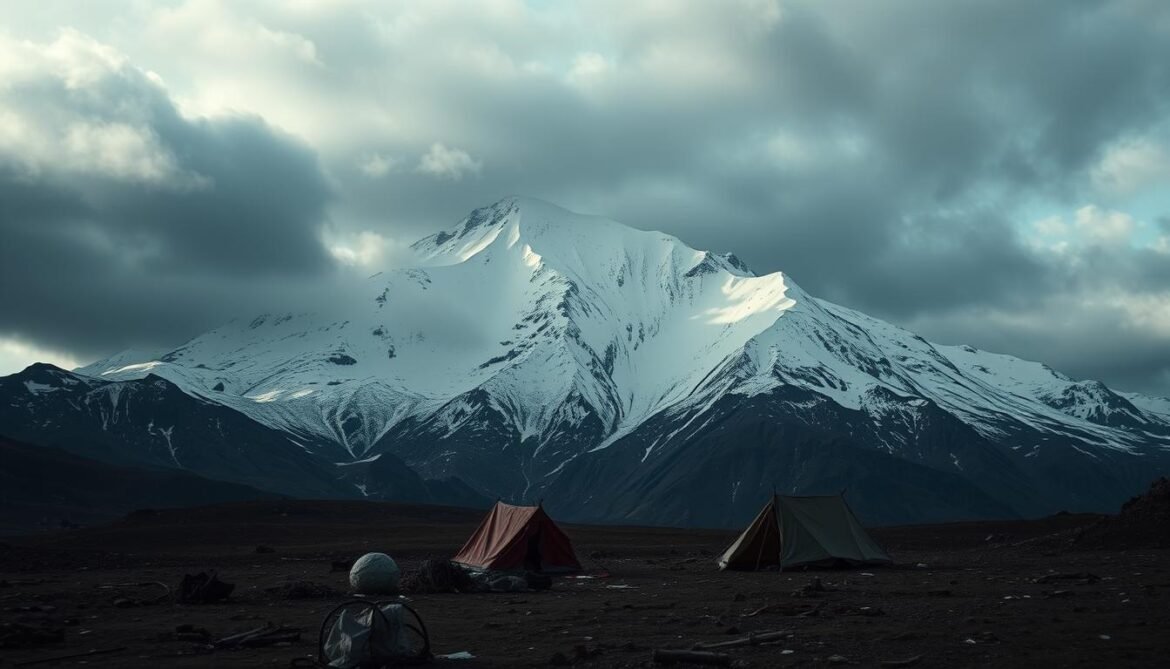What could drive nine experienced hikers to flee a tent in subzero temperatures, partially dressed, and meet a brutal death in the unforgiving Ural Mountains? The Dyatlov Incident represents one of the most perplexing Russian mountain mysteries that has haunted investigators for decades.
In January 1959, a group of nine skilled Soviet mountaineers embarked on a challenging winter expedition near Kholat Syakhl mountain. Their journey would become an unexplained Soviet deaths case that would capture global imagination and spark endless speculation about what truly happened that fateful night.
The incident remains one of the most enigmatic outdoor survival stories in modern history. Despite numerous investigations, scientific analyses, and research attempts, the complete truth behind their mysterious demise continues to elude experts and amateur sleuths alike.
Recent developments suggest we might finally be closer to unraveling this decades-old puzzle. Advanced forensic techniques and new evidence have reignited interest in solving the Dyatlov Incident, promising potential answers to a mystery that has confounded researchers for over 60 years.
Overview of the Dyatlov Incident
The Ural Mountains tragedy remains one of the most perplexing mysteries in hiking history. In 1959, a group of nine experienced skiers embarked on an expedition that would become a legendary 1959 hiking disaster, forever etching their names in mountaineering folklore.
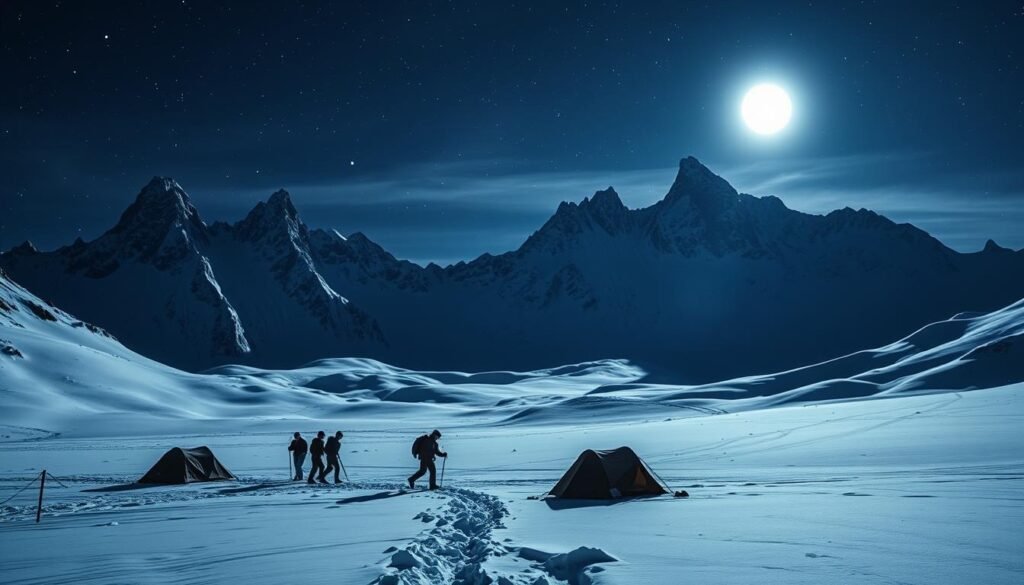
What Happened at Dyatlov Pass?
The expedition to Kholat Syakhl mountain took a tragic turn when the group mysteriously perished under inexplicable circumstances. Their journey began with high spirits and careful planning, but something went terribly wrong during the night of February 1-2, 1959.
- Nine skilled hikers led by Igor Dyatlov
- Planned route through the remote Ural Mountains
- Experienced winter hiking team
- Destination: Otorten mountain region
Background on the Hikers
The team consisted of eight men and two women, all students or graduates from the Ural Polytechnic Institute. They were skilled outdoor enthusiasts with significant winter hiking experience, which made their mysterious deaths even more puzzling.
The Initial Investigation Overview
Soviet authorities launched an immediate investigation into the Ural Mountains tragedy. The initial findings were inconclusive, with rescue teams discovering the group’s abandoned tent and scattered bodies across the snowy landscape.
The circumstances of their deaths defied simple explanation, sparking decades of speculation and research.
The 1959 hiking disaster became a source of intense scientific and public curiosity, with multiple theories emerging about what could have caused such a strange and fatal outcome in the harsh wilderness of Kholat Syakhl.
Key Findings from Recent Investigations
The Dead Mountain investigation has taken significant turns in recent years, shedding new light on the mysterious nine skiers death that captivated researchers for decades. Scientific advancements and renewed forensic analysis have brought unprecedented insights into this long-standing enigma.
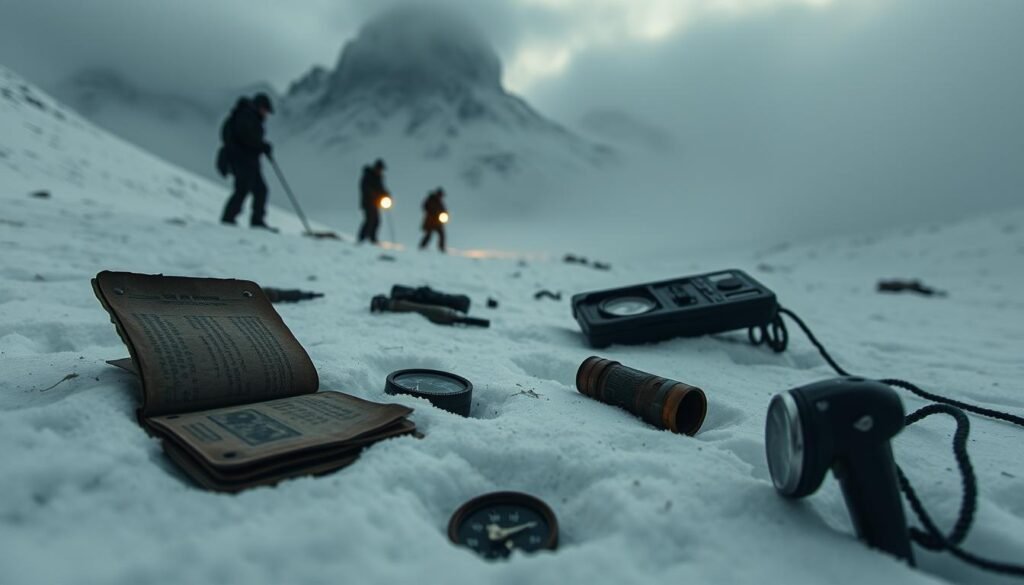
In 2019, Russian authorities made a groundbreaking decision to reopen the investigation, signaling a commitment to uncovering the truth behind the tragic incident. The comprehensive review brought forward critical evidence that challenged previous theories.
New Evidence Uncovered
Key findings from the reopened Dead Mountain investigation revealed several crucial details:
- Detailed topographical analysis of the mountain terrain
- Advanced computer simulations of potential incident scenarios
- Forensic reexamination of the original physical evidence
Forensic Analysis Results
“The scientific approach has finally begun to unravel the mysteries surrounding the nine skiers death,” stated lead investigator Dmitry Kovalev.
The 2020 official investigation concluded that an avalanche was the most probable cause of the hikers’ tragic fate. A subsequent 2021 study by Swiss researchers provided critical computational support for this theory, using sophisticated modeling techniques to simulate the exact environmental conditions.
Researchers utilized advanced forensic techniques to reconstruct the events, including:
- 3D terrain mapping
- Weather pattern analysis
- Biomechanical injury assessment
While questions remain, these recent investigations represent a significant breakthrough in understanding the Dyatlov Pass incident.
Theories Surrounding the Dyatlov Incident
The Dyatlov Pass incident continues to captivate researchers and enthusiasts, sparking numerous explanations for the mysterious Soviet-era mystery. Different theories attempt to unravel the perplexing events that led to the hikers’ tragic demise.
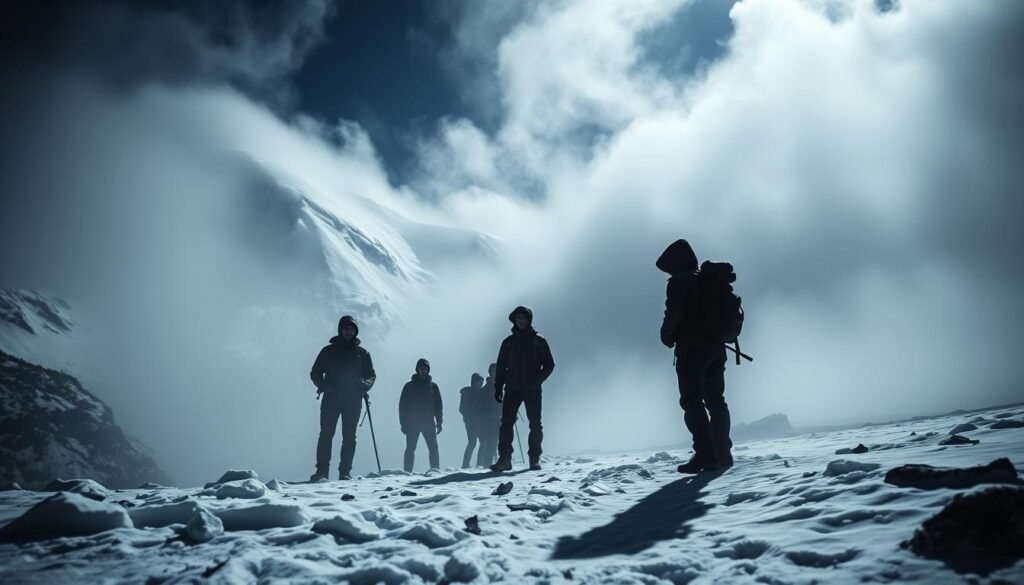
Scientists and investigators have proposed multiple hypotheses to explain the unusual circumstances surrounding the group’s death. These theories range from natural phenomena to more speculative explanations.
Avalanche Theory: A Scientific Perspective
The most credible explanation involves an avalanche scenario. Researchers suggest that a sudden snow slide could have triggered the hypothermia paradox, forcing the hikers to cut their tent and flee in panic.
- Sudden snow movement disrupted the camp
- Extreme cold conditions caused disorientation
- Limited visibility and survival instincts drove extreme behavior
Military Involvement Hypothesis
Some researchers argue that secret Soviet military activities might have played a role in the incident. Potential scenarios include:
- Weapons testing in remote mountainous regions
- Restricted military zones near the hiking route
- Potential cover-up of classified operations
Folklore and Supernatural Explanations
Local legends introduce more fantastical interpretations of the event. Yeti encounters and supernatural phenomena have been proposed, though lacking scientific substantiation.
The mystery of Dyatlov Pass continues to challenge our understanding of human survival and environmental extremes.
Eyewitness Accounts and Survivor Stories
The Dyatlov Incident remains a Russian mountain mystery that continues to captivate researchers and enthusiasts. Firsthand accounts provide crucial insights into the enigmatic event that shocked the world.
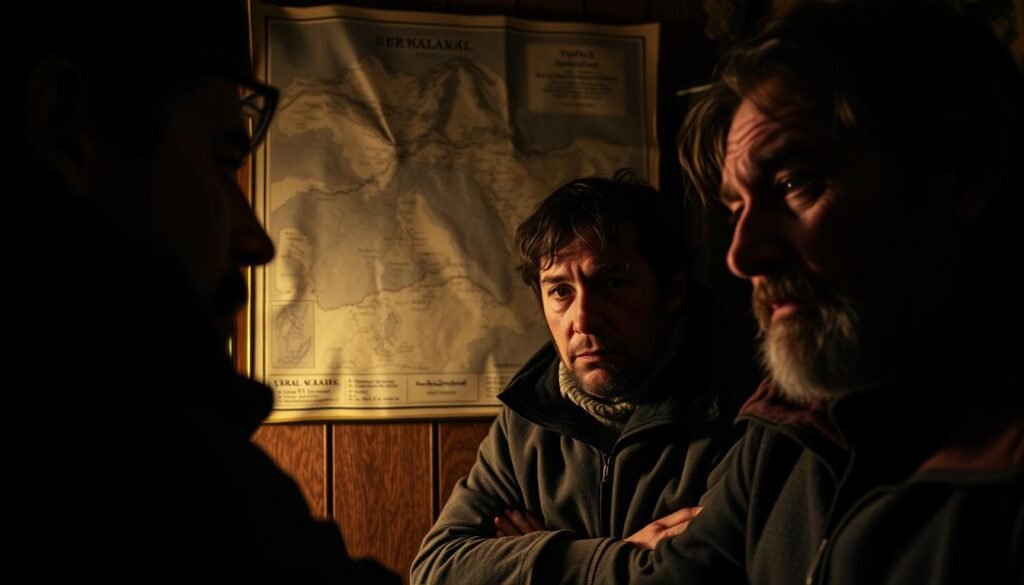
Yuri Yudin, the sole survivor of the original hiking group, offered a unique perspective on the expedition. His testimony revealed the group’s preparedness and state of mind before their fateful journey into the Ural Mountains.
Local Indigenous Perspectives
The Mansi people, indigenous to the region, shared critical information about the treacherous mountain terrain where the Dyatlov Incident occurred. Their traditional knowledge provided valuable context to the investigation.
- Traditional understanding of mountain survival techniques
- Local legends about the challenging wilderness
- Insights into the environmental conditions of the area
Rescue Team Testimonies
Rescue team members who discovered the hikers’ bodies brought critical details to light. Their firsthand accounts painted a chilling picture of the scene and the mysterious circumstances surrounding the group’s demise.
The mountain held secrets that defied simple explanation.
Investigators collected multiple witness statements that added depth to the understanding of this perplexing Russian mountain mystery. Each account provided a piece of the complex puzzle that continues to intrigue researchers decades after the incident.
The Impact of Cold Weather on the Incident
The Ural Mountains tragedy revealed the brutal consequences of extreme cold on human survival. During the unexplained Soviet deaths at Dyatlov Pass, temperatures plummeted to an unforgiving -25 to -30°C, creating a deadly environmental challenge for the hiking group.
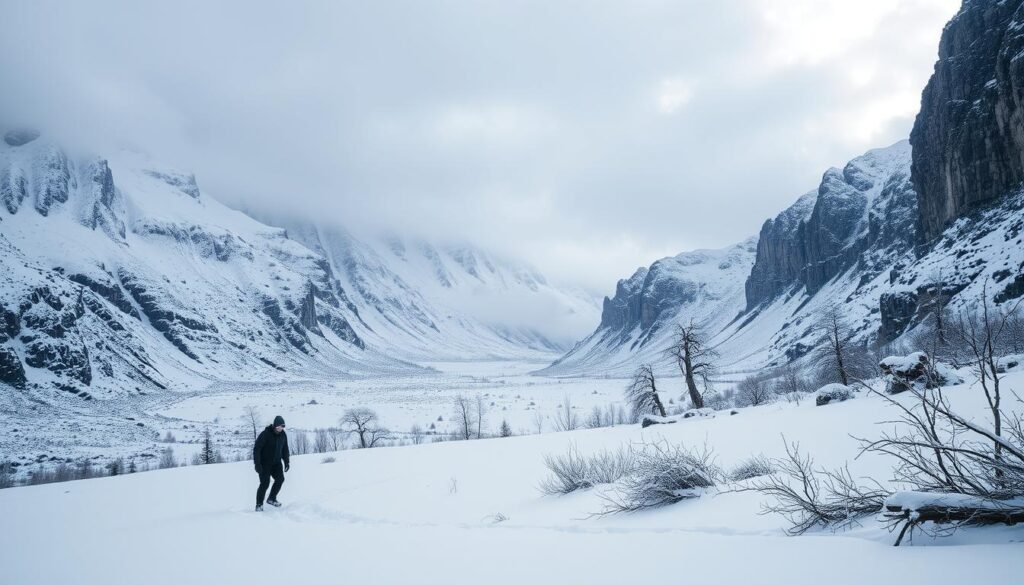
Survival in such harsh conditions demands extraordinary physical and mental resilience. The human body undergoes dramatic changes when exposed to extreme cold, triggering a series of critical physiological responses.
Understanding Hypothermia’s Devastating Effects
Hypothermia transforms human decision-making and physical capabilities. As body temperature drops, hikers experience:
- Impaired cognitive function
- Reduced motor skills
- Irrational behavior
- Decreased ability to recognize danger
Frostbite and Survival Challenges
The Ural Mountains’ unforgiving climate presented multiple survival obstacles. Frostbite can rapidly develop, causing permanent tissue damage and potentially leading to fatal complications.
- Skin begins to freeze within minutes of exposure
- Extremities lose sensation quickly
- Protective clothing becomes less effective as temperature drops
These environmental factors help explain some of the mysterious circumstances surrounding the unexplained Soviet deaths at Dyatlov Pass.
The Role of Technology in Investigating the Incident
The Dead Mountain investigation has undergone a remarkable transformation with the integration of cutting-edge technological approaches. Modern forensic techniques have breathed new life into the Soviet-era mystery, offering unprecedented insights into the enigmatic Dyatlov Pass incident.
Researchers have leveraged advanced technological tools to re-examine the decades-old case with fresh perspectives. The following innovations have been critical in unraveling the complex puzzle:
- High-resolution 3D computer simulations
- Drone-based terrain mapping
- Advanced forensic analysis techniques
- Digital reconstruction of original evidence
Modern Forensic Techniques
Digital forensics has revolutionized the Dead Mountain investigation. Experts now use sophisticated software to analyze historical photographs, recreate environmental conditions, and test multiple hypotheses about the hikers’ mysterious demise.
Technology provides us with tools to look beyond the surface and uncover hidden truths in cold cases.
Use of Drones in Research
Drone technology has become a game-changer in investigating the Soviet-era mystery. These aerial devices can capture detailed terrain imagery, helping researchers understand the challenging landscape where the Dyatlov group met their tragic end.
By combining high-resolution imaging with advanced data analysis, modern researchers continue to shed light on one of the most perplexing mysteries in outdoor expedition history.
Official Reports on the Dyatlov Pass
The 1959 hiking disaster on Kholat Syakhl mountain remains one of the most perplexing investigations in Soviet history. Official reports have shifted dramatically over the decades, revealing a complex narrative of scientific and political scrutiny.

The Soviet Union’s initial investigation into the Kholat Syakhl incident produced a cryptic conclusion that shocked researchers. Investigators stated the hikers died from a “compelling natural force” without providing detailed explanations.
Soviet Union’s Initial Findings
The original report highlighted several critical observations about the 1959 hiking disaster:
- Unusual physical trauma to the hikers
- Unexplained environmental conditions
- Lack of clear evidence of external interference
Recent Russian Government Reports
In 2020, Russian authorities dramatically revised their stance on the Dyatlov Pass incident. The new official report attributed the deaths to an avalanche, attempting to close a decades-long mystery.
The government’s explanation suggested that extreme weather conditions and terrain characteristics could have contributed to the hikers’ tragic fate.
Key elements of the 2020 report included scientific analysis of snow patterns and topographical studies of the Kholat Syakhl region, providing a more comprehensive understanding of the potential environmental factors.
Cultural Impact of the Dyatlov Incident
The Russian mountain mystery of Dyatlov Pass has transcended its tragic origins, becoming a powerful cultural phenomenon that continues to captivate audiences worldwide. Unexplained Soviet deaths often spark curiosity, but this particular incident has grown into a remarkable narrative that stretches far beyond its historical roots.
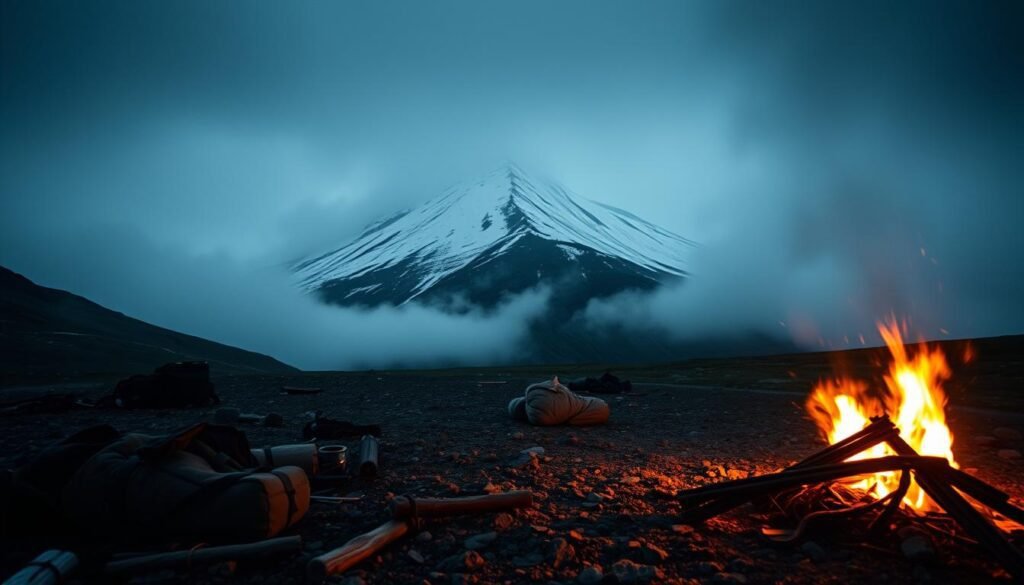
The incident has inspired numerous creative works that explore the enigmatic event from various perspectives. Filmmakers and writers have been particularly drawn to the mysterious circumstances surrounding the hikers’ deaths.
Media Interpretations
Several notable productions have emerged, interpreting the Dyatlov Pass incident through different lenses:
- The 2013 horror film “Devil’s Pass” by Renny Harlin
- A 2020 Russian television series “Dead Mountain: The Dyatlov Pass Incident”
- Numerous documentaries exploring potential explanations
Literary and Cinematic Exploration
Writers and filmmakers have approached the Russian mountain mystery with a mix of historical investigation and creative speculation. Each adaptation brings unique theories about the unexplained Soviet deaths, keeping the story alive in public imagination.
The Dyatlov Pass incident represents a perfect intersection of historical mystery and human curiosity.
The enduring fascination with this case demonstrates how a single unexplained event can transform into a significant cultural narrative, inspiring generations of storytellers and researchers to seek understanding.
Scientific Explanations for Anomalies
The Dyatlov Incident continues to perplex researchers and enthusiasts alike. Scientific investigations have begun to shed light on the mysterious events that unfolded during that fateful expedition in 1959. Experts have developed several compelling theories to explain the seemingly inexplicable circumstances surrounding the tragic mountaineering group.
Researchers have explored multiple natural phenomena that might explain the group’s unusual behavior. The hypothermia paradox emerged as a critical area of scientific investigation. Recent studies published in scientific journals suggest that extreme cold can trigger complex physiological responses that appear irrational to outside observers.
Natural Phenomena Theories
- Infrasound-Induced Panic: Low-frequency sound waves can create feelings of extreme anxiety and disorientation
- Wind-related environmental stress
- Unique atmospheric conditions specific to mountain terrain
The unique topography of the Dyatlov Pass area plays a significant role in understanding the incident. Wind patterns and slope characteristics could have contributed to the group’s unusual decision-making processes.
Psychological Factors at Play
“Extreme environments challenge human perception and rational thinking in ways we are only beginning to understand.” – Arctic Research Specialist
- Severe stress responses
- Group dynamics under extreme conditions
- Survival instinct modifications
Scientific analysis of the Dyatlov Incident reveals the complex interplay between human psychology and extreme environmental challenges. While many questions remain, researchers continue to piece together the puzzle of this extraordinary event.
Conclusion: Has the Mystery Been Solved?
The Dyatlov Incident remains one of the most perplexing Soviet-era mysteries that continues to captivate researchers and enthusiasts worldwide. Despite numerous investigations, definitive answers remain elusive.
Recent scientific analyses have brought us closer to understanding the tragic events. Researchers have proposed several compelling explanations for the mysterious circumstances surrounding the hikers’ deaths.
Unresolved Questions in the Community
While current evidence points toward natural environmental factors, key uncertainties persist about the Dyatlov Incident:
- The exact sequence of events leading to the hikers’ deaths
- Unusual physical conditions of the bodies
- Unexplained behavioral patterns during the incident
Final Perspectives on the Case
The avalanche theory provides the most scientifically supported explanation for the Dyatlov Pass tragedy. Forensic reconstructions suggest extreme weather conditions and terrain characteristics could have triggered a catastrophic series of events.
The truth may be less sensational than previous speculations, but no less compelling.
Investigators continue to analyze new evidence, demonstrating that scientific curiosity remains alive in understanding this Soviet-era mystery. While we may never know every detail, each investigation brings us closer to comprehending the human story behind the enigmatic Dyatlov Incident.
Resources for Further Research
The Dead Mountain investigation continues to captivate researchers and enthusiasts worldwide. For those seeking to dive deeper into the mysterious nine skiers death, a wealth of resources exists to help unravel the enigma of the Dyatlov Pass incident.
Readers interested in exploring this haunting case can find comprehensive materials across various media platforms. The Dyatlov Pass dedicated website offers an extensive collection of research materials and firsthand accounts.
Essential Books for In-Depth Understanding
- Dead Mountain by Donnie Eichar – A comprehensive investigation of the mysterious incident
- 1079: The Overwhelming Force of Dyatlov Pass by Teodora Hadjiyska – Detailed analysis of the case
- Journey to Dyatlov Pass by Keith McCloskey – Extensive research and exploration
Documentaries and Visual Resources
- Discovery Channel’s “Russian Yeti: The Killer Lives”
- National Geographic special on the Dyatlov Pass incident
- Independent documentary “Dyatlov: An Unknown Compelling Force”
Digital and Podcast Resources
Digital platforms provide additional insights into the Dead Mountain investigation. Podcast series like “Unexplained” and “Mysterious Universe” offer in-depth discussions about the nine skiers death, bringing new perspectives to this enduring mystery.
“The Dyatlov Pass incident remains one of the most fascinating unsolved mysteries of the 20th century.” – Documentary Filmmaker
Researchers and curious minds can continue exploring this intriguing case through these carefully curated resources, each offering unique insights into the perplexing events that occurred in the Ural Mountains.
Frequently Asked Questions About the Dyatlov Incident
The Ural Mountains tragedy of 1959 continues to captivate researchers and mystery enthusiasts worldwide. This 1959 hiking disaster remains one of the most perplexing unsolved cases in Russian exploration history. Many people have questions about the bizarre circumstances surrounding the incident that claimed the lives of nine experienced hikers in the remote wilderness.
Numerous misconceptions have emerged over decades of speculation. Some individuals believe supernatural forces were responsible, while others suggest complex government conspiracies. The reality is far more nuanced. Forensic investigations have provided significant insights into the potential causes of this tragic event, revealing environmental and psychological factors that might explain the hikers’ unusual behavior and ultimate fate.
Unpacking the Mystery
Key questions persist about the Dyatlov Pass incident. What caused the group to cut their tent and flee into subzero temperatures? Why were some bodies found partially undressed despite extreme cold? Researchers have proposed multiple scientific explanations, ranging from hypothermia-induced paradoxical undressing to potential avalanche triggers that could have caused panic and disorientation during the 1959 hiking disaster.
Separating Fact from Fiction
Expert analysis suggests that natural phenomena, rather than supernatural events, likely explain the Ural Mountains tragedy. Modern forensic techniques have helped demystify many aspects of the case, providing rational explanations for what was once considered inexplicable. Understanding the complex environmental and human factors can help us appreciate the challenges faced by these brave explorers during their final expedition.

